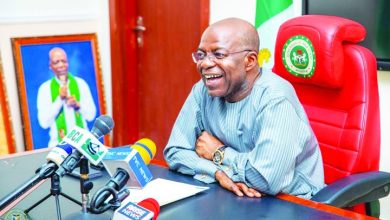FG Targets 4 Million Tonnes of Green Ammonia Annually by 2060 to Boost Clean Energy, Fertilizer Production
Nigeria plans to produce four million tonnes of green ammonia yearly by 2060 to boost sustainability.
The project aims to cut emissions, grow the economy, and enhance fertilizer self-sufficiency nationwide.
The Federal Government has revealed plans to produce over four million tonnes of green ammonia per year by 2060 as part of its broader efforts to shift from fossil fuels to clean energy sources and strengthen local fertilizer manufacturing.
The announcement was made during the Nigeria for Hydrogen (Nigeria4H2) Stakeholders’ Workshop held at the Presidential Villa in Abuja. The event brought together senior government officials, development partners, academics, and experts to evaluate Nigeria’s green hydrogen potential, according to a statement released by the organizers on Saturday.
Vice President Kashim Shettima, represented by his Special Adviser on Economic Affairs, Tope Fasua, called on investors to support Nigeria’s transition to green hydrogen. He said the project would diversify the country’s energy sources and open up new economic opportunities, leveraging Nigeria’s abundant solar and wind energy to generate the clean electricity needed for hydrogen production.
He described the Nigeria4H2 initiative as a timely and strategic response to global climate goals, expressing confidence that it could position Nigeria as a key player in the emerging global green economy.
“The Nigeria4H2 Project is our strategic commitment to a future where energy security and environmental protection go hand in hand. This initiative aims to tap into the country’s vast, untapped green hydrogen potential,” Shettima stated.
He highlighted the role green hydrogen could play in reducing carbon emissions, creating green jobs, and attracting foreign investments. Despite the expected challenges in securing capital at the early stages, he stressed that the long-term economic benefits could be significant.
“This project can establish a new revenue stream, reduce dependence on unstable fossil fuel markets, and bring in substantial foreign direct investments,” he added.
The Nigeria4H2 project is spearheaded by the West African Science Service Centre on Climate Change and Adapted Land Use (WASCAL), in partnership with Nigerian universities and the German government. It focuses on using green hydrogen to produce green ammonia a sustainable and eco-friendly alternative to traditional nitrogen-based fertilizers.
At the workshop, WASCAL’s Executive Director, Prof. Emmanuel Ramde, said studies had shown that Nigeria could produce over four million tonnes of green ammonia annually by 2060, depending on the investment scenario adopted.
“With the right regulatory policies, investments, and infrastructure, Nigeria can meet much of its domestic fertiliser demand while also becoming a major player in the global green ammonia market,” Ramde said.
He added that this would strengthen Nigeria’s food systems, reduce reliance on imported fertilizers, support farmers, and create thousands of jobs throughout the green hydrogen and fertilizer value chain.
The study also recommended formulating a national green hydrogen strategy, expanding renewable energy infrastructure, encouraging local production of electrolysers, and incorporating green ammonia into national fertiliser policies.
Delivering a keynote address, Director-General of the Energy Commission of Nigeria, Dr Mustapha Abdullahi represented by Ibrahim Sulu revealed that Nigeria had already drafted a National Hydrogen Policy and Strategy. He said the framework aligns with President Bola Ahmed Tinubu’s Renewed Hope Agenda and outlines a roadmap to reduce carbon emissions, drive innovation, and attract private sector investment.
According to the strategy, pilot projects between 2026 and 2028 will include a 50MW green hydrogen plant at Kano Solar Park, rural hybrid microgrids, and carbon capture schemes. By 2035, the government aims to attract $5 billion in private investment, create 500,000 new jobs, and generate $10 billion annually from hydrogen exports.
Sulu also disclosed plans to establish a National Hydrogen Council to be chaired by the Vice President, alongside two subcommittees focusing on domestic hydrogen applications and exports. He said hydrogen could help cut Nigeria’s industrial CO₂ emissions by 20% by 2030.
The Energy Commission, he added, will lead the energy security aspect of the national Inter-Ministerial Committee on Research and Innovation, launched in May, with green hydrogen set as a top strategic focus.
In closing, Vice President Shettima urged all stakeholders particularly the private sector and academia to step up with innovation, investment, and collaboration.
“This mission is bigger than government alone. It needs the collective drive and brilliance of all stakeholders. Together, we can unlock Nigeria’s green hydrogen potential and ensure a more sustainable future for everyone,” he said.



